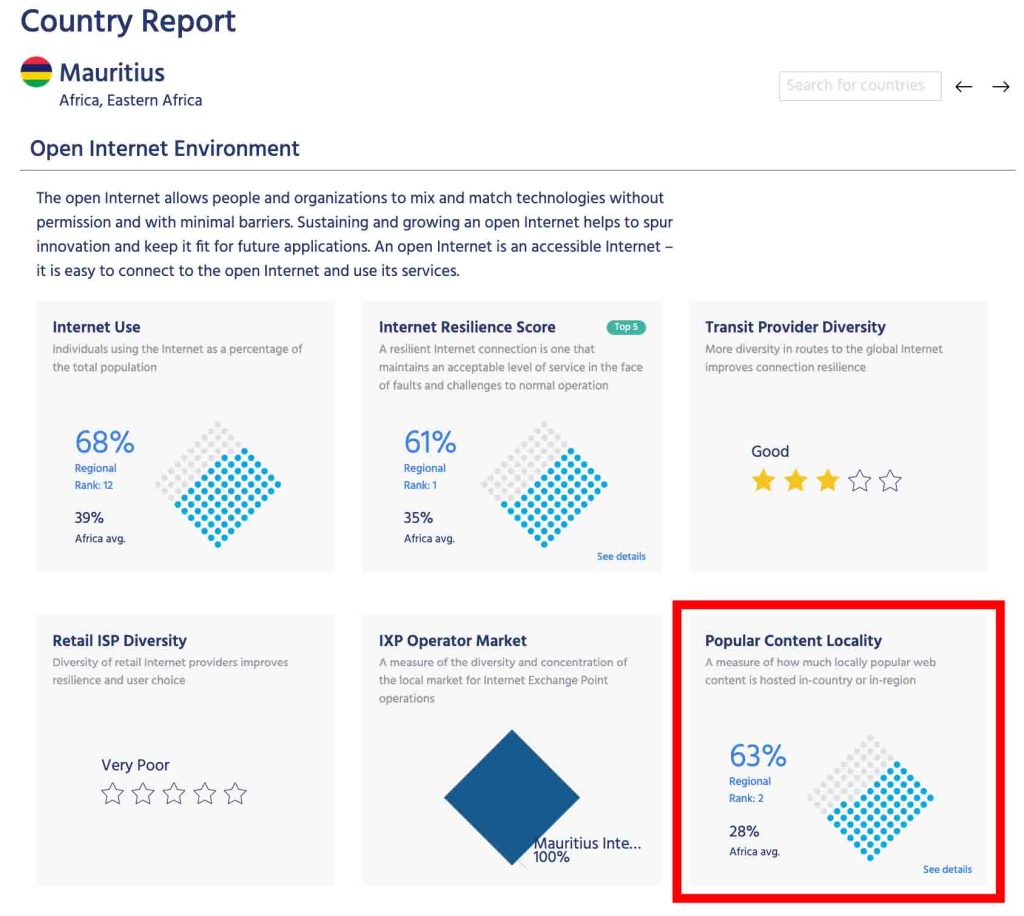Every Internet user should benefit from a reliable, affordable, and resilient Internet connection that enables a quality user experience.
Latency is the biggest enemy regarding the quality of experience, which is mainly influenced by where the content is located. Bringing content closer to end users improves latency and reduces reliance on expensive Internet transit links, making the Internet more affordable.
With this in mind, the Internet Society has set a goal of having 50% local traffic in selected economies by 2025. Measuring local traffic in a country is a crucial step in achieving this target.
To address this, the Pulse team, including one of our 2024 Pulse Research Fellows, has been developing a suite of new products to measure and display what percentage of each country’s most popular Internet websites is stored on servers in the country or abroad.
From today, fittingly the Soltice—the halfway mark of the year—you can view a simplified version of this measurement via the Pulse Country Reports (Figure 1).

In the coming months, we will introduce additional features so you can compare your country’s traffic locality to others and understand which content delivery networks (CDNs) serve the largest percentage of each country’s most popular content.
Until then, read our 2024 Research Fellow’s post outlining the measurement project, check out our methodology, and share your thoughts and questions via [email protected].


